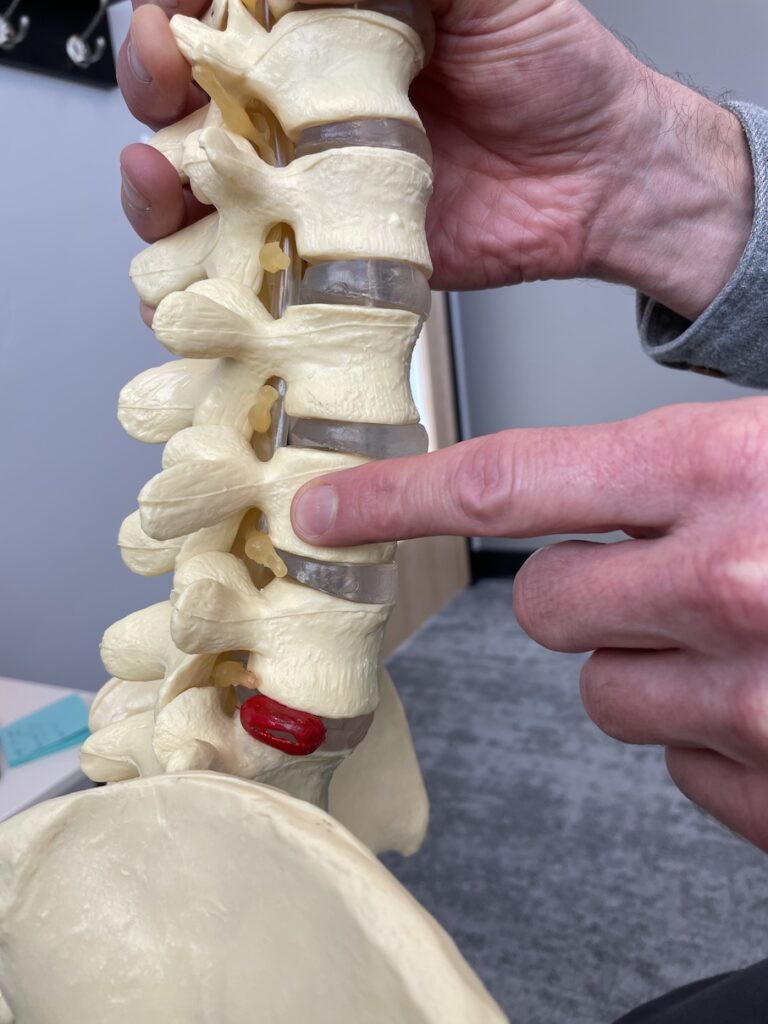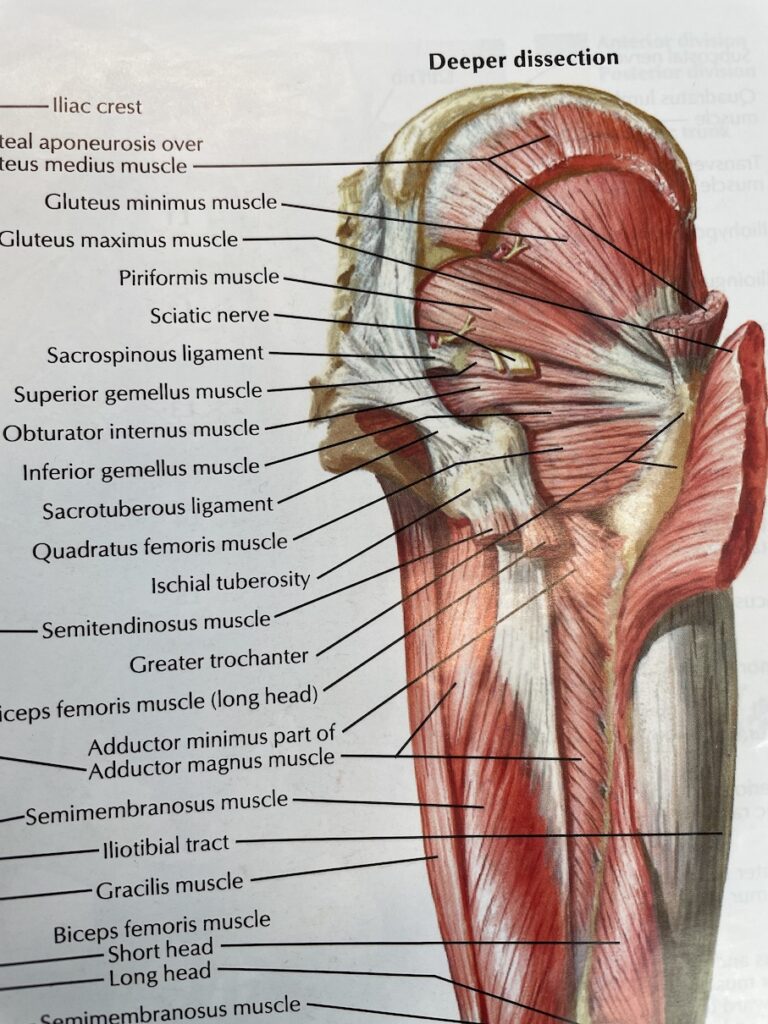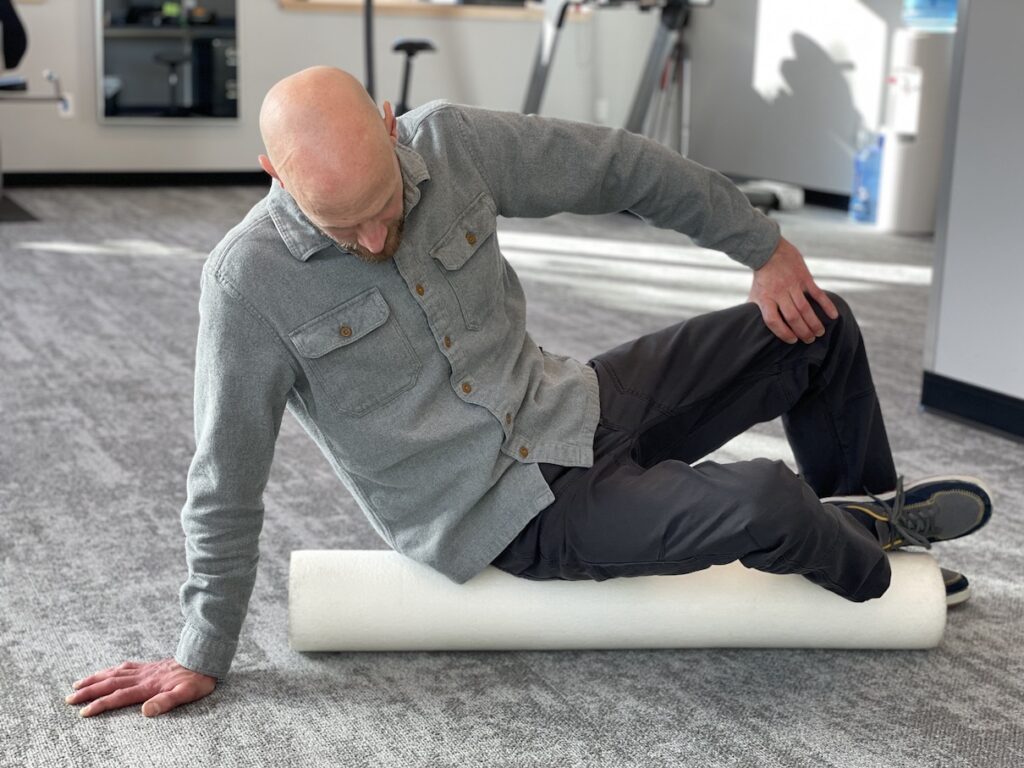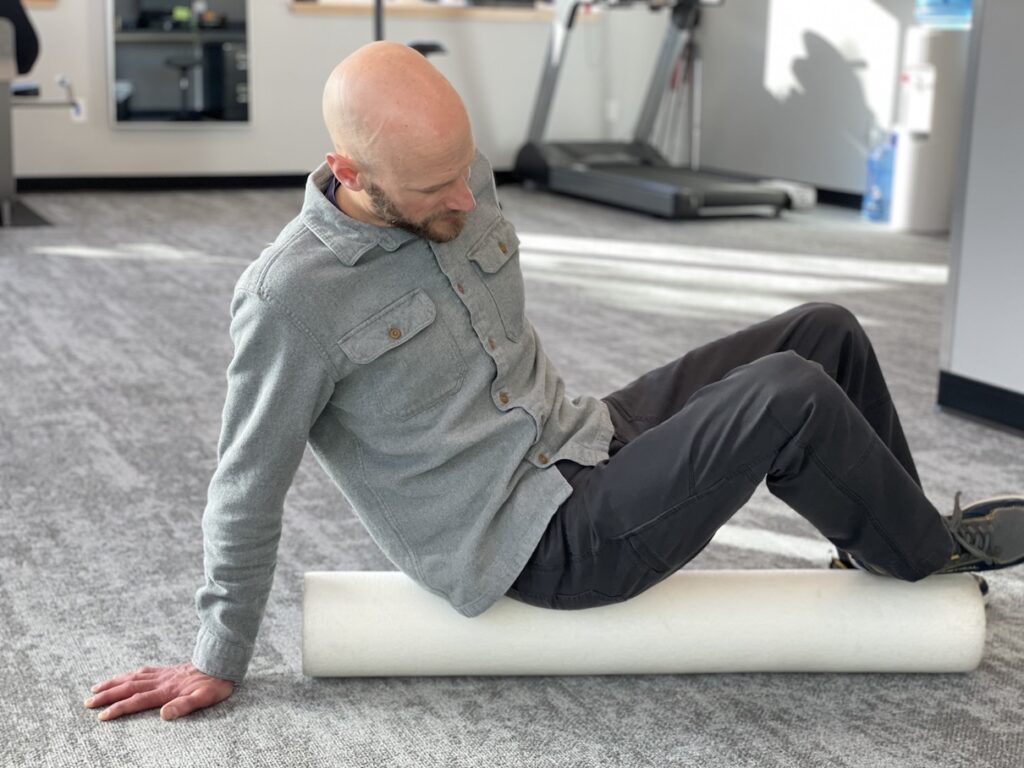John arrived at his physical therapy evaluation and shared that he had sciatica with his physical therapist, Rob Hollander. However, as Rob began to unravel the mystery behind John’s pain, he quickly discovered that John’s pain wasn’t sciatica; it was back pain.
According to Rob, “There is a misnomer that localized back pain is sciatica, but this is not the case.”
The best way to tell the difference between back pain and sciatica starts with one question: Does your pain run down your leg? If the answer is no, chances are the issue isn’t sciatica.
What is Sciatica?
Sciatica is a type of lumbar radiculopathy, an irritation of either a single lumbar spine nerve root or the group of nerve roots that form the sciatic nerve. The sciatic nerve is the largest in the body. It forms from a group of nerves off of the lumbar and sacral regions of the spine and runs down the hips and buttocks, branching down each leg into the feet.
Sciatic pain can be intermittent or constant with varying levels of intensity. If nerve inflammation progresses, it can present as numbness, leg weakness, and in severe cases, affect bowel and bladder control. Sciatica typically only impacts one leg, not both, and up to 90 percent of people with sciatica recover without surgery.
Why Does Sciatica Happen?
About 40 percent of adults in the U.S. experience sciatica at some point in their life. It can come on suddenly, such as with trauma, or over time, like with arthritis. And while the causes and risk factors vary, sciatica can be triggered by seemingly benign things that end up causing microtrauma that worsens with each episode. The two main factors that result in sciatica are when the nerve gets compressed (think “pinched” nerve) or when the nerve is overstretched (a traction injury). Clinically we see nerve compression injuries more commonly.
What Causes Sciatica?
Sciatica can be caused by several things such as:
- Foraminal narrowing (arthritis/stenosis). The foramen is an opening or hole between the vertebrae through which the nerve passes.
- Spondylolisthesis occurs when one vertebra slips out of line with the one above it. This narrows the space where the nerve exits, pinching the nerve.
- A bulged or herniated disc can put impact the nerve root
- Piriformis syndrome can develop when the piriformis muscle, located deep in the glute, becomes tight or spasms, putting pressure on the sciatic nerve. This can be caused by tight muscles or repeatedly sitting on a wallet.


How is Sciatica Treated?
Because it has different causes, the most appropriate treatment will vary. That’s why seeing a Bend, Oregon physical therapist is a wise move. As movement specialists, they can do a thorough exam of the integrity of your spine. The exam includes movement testing and a comprehensive neurologic exam, which assesses sensation, reflexes, and strength related to the different nerve root levels at the back. A physical therapist may also include nerve root stress tests.
How to Know if I Have Sciatica?
If you have sciatica, you may be experiencing:
- Increased leg pain with extended bending, sitting or lifting. People with this may also feel unstable, or their back will give way resulting in leg pain.
- Unable to stand or walk a long distance without leg pain. These people often feel better or have total relief when sitting.
- Moderate to severe pain in the lower back, buttock, and down the leg.
- Numbness or weakness in the lower back, buttock, leg, or feet.
- Pins and needles in the leg, toes, or feet.
- A loss of bowel or bladder control (incontinence).
When Should I Seek Medical Attention for Sciatica?
As mentioned earlier, sciatica typically resolves in a few weeks without surgery. However, if the sciatic pain is one of the following, you should see a physical therapist or doctor to identify the cause and adequately treat it. Early attention to the care typically results in faster recovery.
- Recurrent/not improving
- Unrelenting, and causes numbness and tingling, leading to leg weakness and instability
- Results in bladder or bowel incontinence (contact your MD)
How Can I Treat Sciatica at Home?
If you have sciatica, a few home remedies can help relieve your symptoms and prevent future episodes. These include:
- Take over-the-counter NSAIDs, such as ibuprofen and naproxen, to relieve pain.
- Apply ice and heat to the affected area. Use ice packs when pain first presents to reduce swelling and pain for 20 minutes several times a day. Graduate to heat after several days at 20-minute increments.
- Stretch. The best stretches improve flexibility in the lower back and legs.
- Strengthen core muscles. Good posture is a crucial component to helping reduce the risk of sciatica. Good posture comes from a strong core.
- Get aerobic exercise. Moving your body by doing activities such as swimming, walking, or water aerobics can improve mobility, which helps decrease risk factors for sciatica.


As mentioned previously, sciatica, while painful, does not typically require surgery and can often be self-managed. If your symptoms necessitate seeing a physical therapist, doing so soon after symptoms appear will help you feel better, faster so you can get back to experiencing every day.
